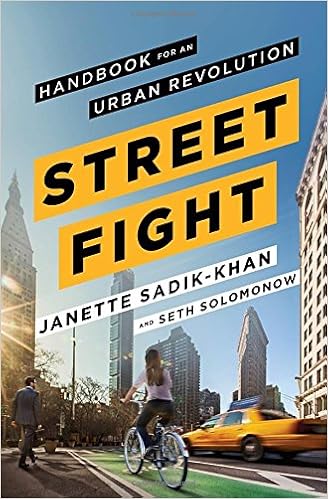The average Tennessean gets less then 3 active minutes per day. If exercise is a key cure for what ails you (see link and article below), then we need to do a significantly better job of building a city that makes active transport easy.
Hope for a better built environment came quickly in Mayor Barry's term when she signed an executive order for Nashville to build Complete and Green streets in May of 2016.
In fact, 'Metro Government has had a formal policy requiring that streets be designed to accommodate all modes of transportation since 2009, when Mayor Karl Dean issued the city’s inaugural Executive Order for Complete Streets'.

Therefore, it is a little confusing why we are still allowing options when important streets, such as 51st Avenue in The Nations, are being redesigned. Currently, 51st has 2 options on the table: one with bike lanes and one without. Councilwoman Mary Carolyn Roberts is deciding between the two...
If we are really honest and committed to Complete Street policy, this major road would have a bike lane. There wouldn't be a decision to make.
***
As a pedestrian advocate, the addition of a bike lane to 51st Avenue has a lot of importance:
1. Slows Cut-through Traffic - when drivers have to account for bikes, in addition to other cars, it encourages them to slow down
2. Bikes Add Visual Interest - Frankly, a lot of Nashville's pedestrian infrastructure is pretty dull. Bicyclist add another layer of motion and interest
3. Giving bicyclist a Safe Place to Ride discourages from using sidewalk or riding illegally (i.e. against traffic). I am not against bikes on sidewalks in some situations, but it is safer not to be surprised by bicycles when on foot.
4. Every person who bikes or walks is One Less Car in the queue at the stop light and one less parking spot taken. The debate over bike lanes on 51st is due to parking concerns.
5. The Nations is Flat - an easy and enjoyable bike ride! No joke, one of the reasons people sited for NOT biking is our many hills in Nashville. 51st Av is an ideal road for bike lanes as it is wide, long and flat. Add a B-cycle station or two and now you have a robust and vibrant center with healthy glowing locals. Win-win.
6. It would show that Nashville's commitment to Complete Streets is genuine and not just lip service.
***
Link to Executive Order on Complete and Green Streets, NASHVILLE
***
HELLO!
VOTE for where a sidewalk is needed in Nashville!
Double click on link below for map:
***
Do you feel that you have to wear something special to walk in Nashville?
I am collecting photos of the many unique things people feel they need to wear simply to walk safely in Nashville.
Share photos of your WALKING OUTFIT on Instagram with hashtag:
#NashvilleNeedsSidewalks
LINK:
Closest Thing to a Wonder Drug? Try Exercise

After I wrote last year that diet, not exercise, was the key to weight loss, I was troubled by how some readers took this to mean that exercise therefore had no value.
Nothing could be further from the truth. Of all the things we as physicians can recommend for health, few provide as much benefit as physical activity.
In 2015, the Academy of Medical Royal Colleges put out a report calling exercise a “miracle cure.” This isn’t a conclusion based simply on some cohort or case-control studies. There are many, many randomized controlled trials. A huge meta-analysis examined the effect of exercise therapy on outcomes in people with chronic diseases.
Let’s start with musculoskeletal diseases. Researchers found 32 trials looking specifically at the effect of exercise on pain and function of patients with osteoarthritis of the knee alone. That’s incredibly specific, and it’s impressive that so much research has focused on one topic.
Exercise improved those outcomes. Ten more studies showed, over all, that exercise therapy increases aerobic capacity and muscle strength in patients with rheumatoid arthritis. Other studies proved its benefits in other musculoskeletal conditions, like ankylosing spondylitis, and even some types of back pain.
For people (mostly middle-aged men) who had had a heart attack, exercise therapy reduced all causes of mortality by 27 percent and cardiac mortality by 31 percent. Fourteen additional controlled trials showed physiological benefits in those with heart failure. Exercise has also been shown to lower blood pressure in patients with hypertension, and improve cholesterol and triglyceride levels.
People with diabetes who exercise have lower HbA1c values, which is the marker of blood sugar control, low enough to probably reduce the risk of complications from the disease. Twenty randomized controlled trials have showed that patients with chronic obstructive pulmonary disease can walk farther and function better if they exercise.
Multiple studies have found that exercise improves physical function and health-related quality of life in people who have Parkinson’s disease. Six more studies showed that exercise improves muscle power and mobility-related activities in people with multiple sclerosis. It also appeared to improve those patients’ moods.
The overall results of 23 randomized controlled trials showed that exercise most likely improves the symptoms of depression. Five others appear to show that it improves symptoms in patients with chronic fatigue syndrome. In trials, exercise even lessened fatigue in patients who were having therapy for cancer.
What other intervention can claim results like these?
Even studies of older, hospitalized patients show a beneficial effect from multidisciplinary interventions that include exercise. Those randomized to such interventions in the hospital were more likely to be discharged to go home, and to spend less time in the hospital over all — and at a lower cost.
Although we don’t think of it this way, you can make a pretty good argument that exercise is as good as drugs for many conditions. A 2013 meta-analysis of meta-analyses (that’s how much data we have) combined and analyzed the results from 16 reviews of randomized controlled trials of drug and exercise interventions in reducing mortality. Collectively, these included 305 trials with almost 340,000 participants.
Diuretic drugs (but not all drugs) were shown to be superior to exercise in preventing death from heart failure. But exercise was found to be equally good as drugs in preventing mortality from coronary heart disease. Exercise was better than drugs in preventing death among patients from strokes.
Many people will be surprised at how little you need to do to achieve these results. Years ago, in an effort to get in shape, I tried the P90Xroutine. It proved too hard for me. Later, when I tried the Insanityworkout, it beat me so badly that people at work kept asking me if I was ill. Two years ago, I tried P90X3. It was a bit more manageable, but I still couldn’t keep it up.
I have not been alone in thinking that physical activity to improve health should be hard. When I hear friends talk about exercising, they discuss running marathons, participating in CrossFit classes or sacrificing themselves on the altar of SoulCycle. That misses the point, unfortunately. All of these are much more than you need to do to get the benefits I’ve described.
The recommendations for exercise are 150 minutes per week of moderate intensity physical activity for adults, or about 30 minutes each weekday.
Moderate intensity is probably much less than you think. Walking briskly, at 3 to 4 miles per hour or so, qualifies. So does bicycling slower than 10 miles an hour. Anything that gets your heart rate somewhere between 110 and 140 beats per minute is enough. Even vacuuming, mowing the lawn or walking your dog might qualify.
Today, my goals are much more modest. Trekking from my office to the clinic and back again gives me 30 minutes of exercise. Or, I walk to the supermarket from my office to grab lunch, at a mile each way. In colder weather, I spend half an hour on the elliptical machine. Doing this five days a week gets me the activity I need.
Although it feels as if there’s nothing we can do to change people’s behavior, there is evidence to the contrary. A systematic review and meta-analysis of advice and counseling by health professionals found that promotion of physical activity works.
Doctors and clinics that made efforts to promote exercise to patients needed to engage 12 adults on the subject to get one additional adult to meet recommended levels of activity one year later. That might not sound impressive, but it’s one of the better such results.
After the Academy of Medical Royal Colleges wrote its report, an editorial in the BMJ, a prominent medical journal, countered that exercise wasn’t a “miracle cure.” Instead, the authors argued it was “the best buy for public health.”
If that’s the best “counterpoint,” then physical activity seems like a no-brainer.






















